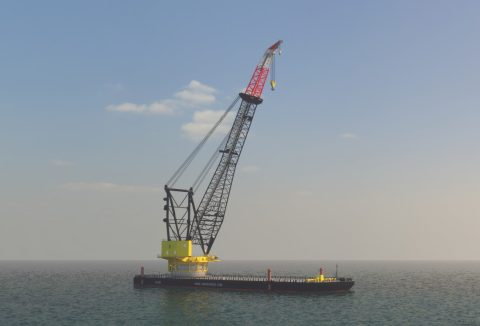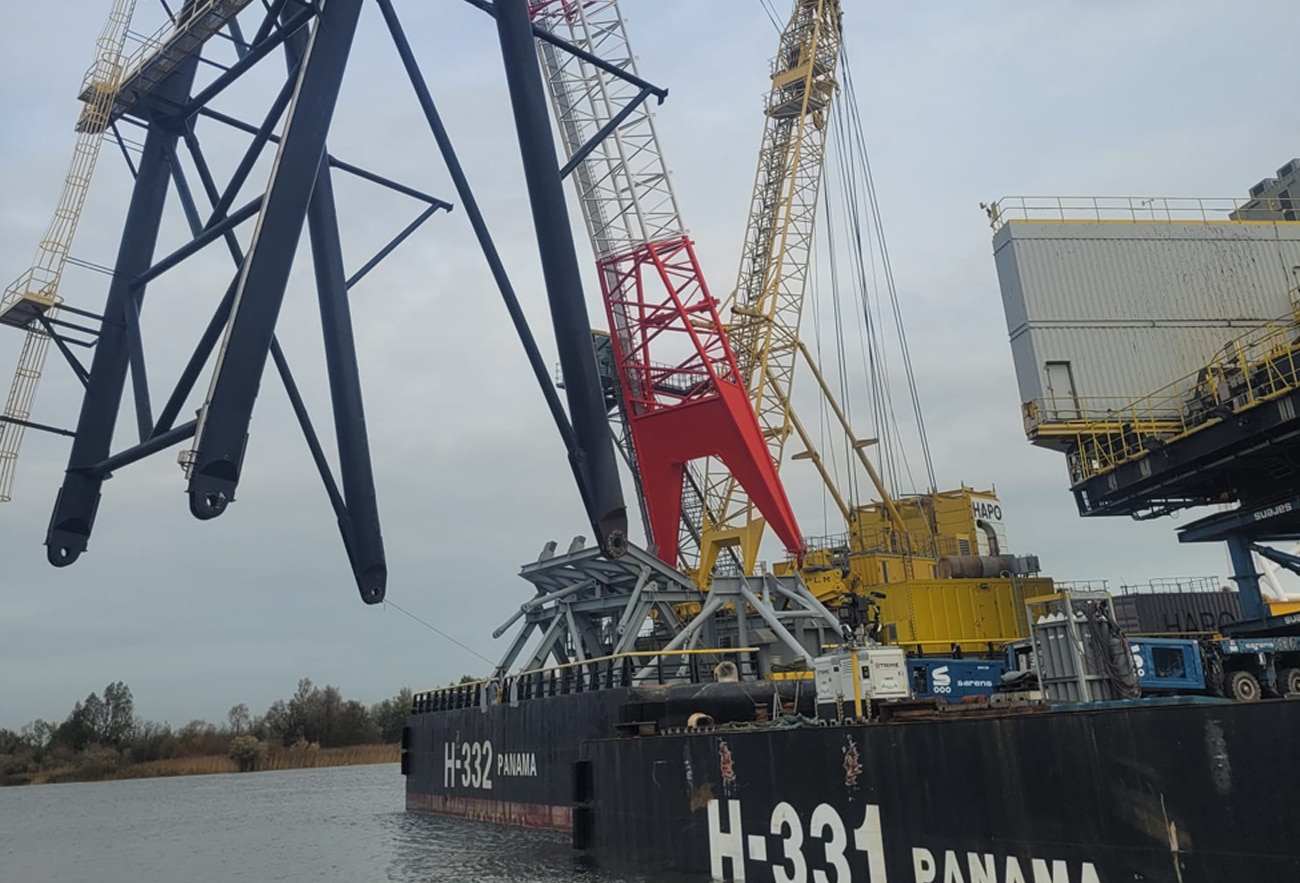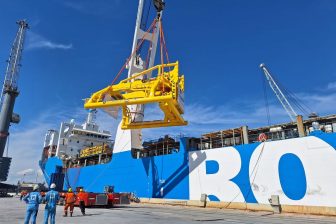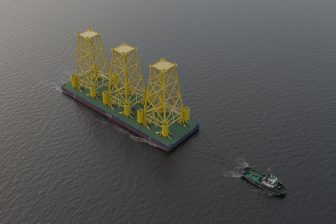
Removed Wind Osprey and Wind Orca cranes get a new chance
As Cadeler’s Wind Orca and Wind Osprey jack-up vessels get their new cranes installed in Schiedam, the old units have got a new lease on life. Hapo International Barges have decided to buy both cranes from Cadeler strengthening its position in the heavy-lift barge market.
Ex-Wind Orca and Ex-Wind Osprey cranes both have a lifting capacity of 1,200 tons and have been in operation for a decade. However, the growing size of units both vessels needed to handle meant that Cadeler decided to upgrade their lifting capacity.
“The sale is one of those absolute win-win situations for both parties. As far as we’re informed, this is the first time cranes from wind turbine installation vessels are being sold to fulfil a meaningful second life – a solution that is in line with our target to place greater focus on circularity. We’re very appreciative of Hapo International Barges’ commitment to expand the lifetime for these great cranes that heroically have served Cadeler and the green transition to renewable wind energy”, said Cadeler’s CEO Mikkel Gleerup.
At the start of the month, the second crane was handed over on the bridge of the Wind Osprey, following a technical inspection. The cranes are in the process of being lifted off the jack-up vessel and transported to the Hapo yard in Ridderkerk.

In this process, Hapo uses their own H-331 and H-282 barges and lifting equipment. Sarens is hired for the RoRo operations and DDL Marine is responsible for the project management backed up by the engineers of Saltwater Engineering.
The cranes are now also available for re-sale whilst the plans for retrofitting the cranes to barges are being shaped. It is expected that the cranes will be retrofitted to shallow water barges, however, significant engineering work is required to fit the new barge concept. Retrofitting process could take approximately nine to 12 months.
You just read one of our premium articles free of charge
Register now to keep reading premium articles.




